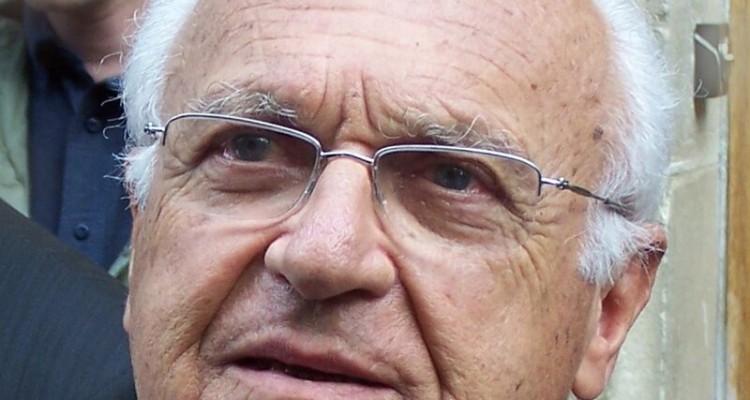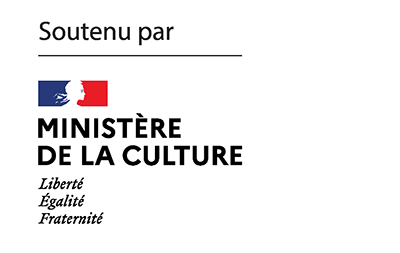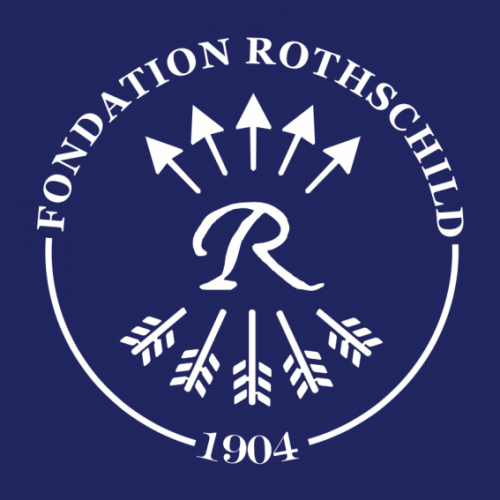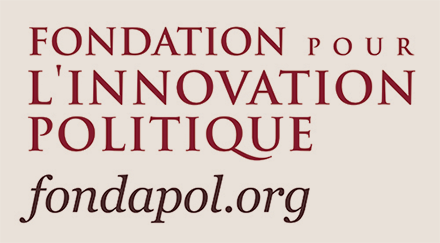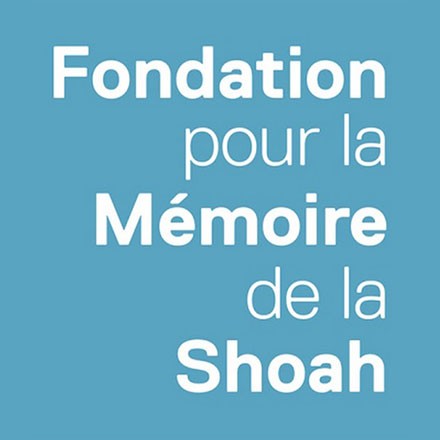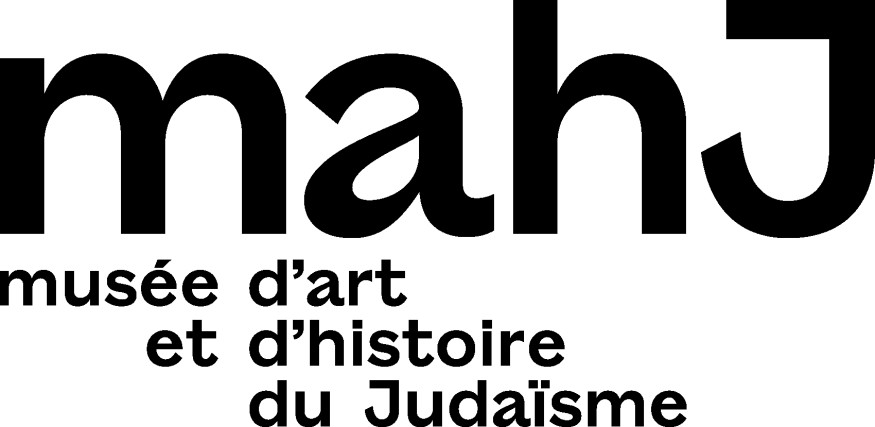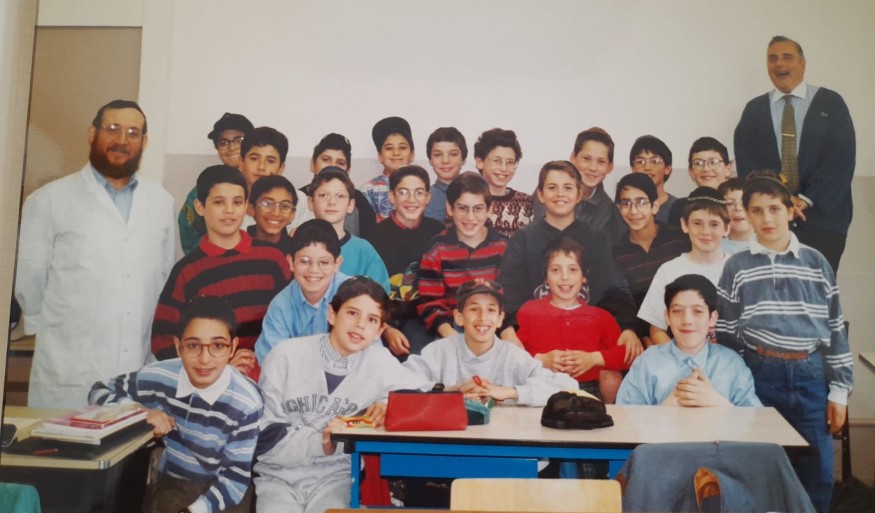
I am right in the center of the picture.
We are 25 boys from the 6th grade of the Aquiba school, the main Jewish school in Strasbourg.
The Aquiba school was located on the Quai Zorn, in Strasbourg, in the so-called “German” district, that is to say the one built during the annexation of Alsace to the Second Reich between 1870 and 1914. Ironically, this area had meanwhile become the Jewish quarter, where the Great Synagogue, the Contades park that Jews walk through on Shabbat and the city’s main kosher shops are located. It wasn’t until well after my schooling that I realized that Zorn means fury in German. Aquiba was founded in 1948, like the State of Israel, out of the rubble and ashes of the devastation that had just occurred. At school, no one ever explained to us why our school was named after this eminent Talmudic teacher rather than another. It was only much later, too, that I discovered that Aquiba had distinguished himself from his peers by his messianic support for Bar Kochba’s armed and desperate revolt in 135 against the Roman occupiers[1]. The final Jewish war, the end of Judea now called Palestine, the beginning of the dispersion, until 1948.
Of all this we knew nothing, just as we knew nothing about the Shoah or the history of Zionism or the whys and wherefores of the texts and rules of a religion that was supposed to be one of questioning – at least that’s what was said about it – that we were taught from an early age. Jewishness was a fact, a massive evidence never formulated, a container that does not need content, never problematized, never put into perspective by any exteriority. It was aberrant and irritating, but perhaps this was the condition of its perpetuation, even if it meant leaving a few lame ducks on the side of the road, all those who did not naturally fit into the mold and lived elsewhere internally, collateral damage of the survival, at all costs, of the Jews.
I had been nipped in the bud during the weeks preceding the start of secondary school because, with a dozen other friends, we came from a much smaller, almost family-run, but also more religious elementary school, which was located on the outskirts of Strasbourg, in the last inhabited district before the no-man’s-land that still separated France from Germany. An entirely private establishment in which half of the classes were held in the basement in neon-lit classrooms and which bore the name Tachbar, an acronym in Hebrew for Tinokot CHel Beth Raban, “the children of the house of the masters,” which children emit, says a master of the Talmud[2], the mist on which the world rests. This is a testament to a mixture of bric-a-brac and megalomania that set the tone of the worldview in which we were immersed: the mist (hevel) is also the word for vanity, as in Ecclesiastes’ “vanity of vanities,” three times nothing, then, but one that avoids fooling oneself about what really weighs down in existence.
My parents had sent my older brother and me to Tachbar somewhat blindly, because it was the school specially created for the children of the Students’ Yechiva, the community they had joined in Strasbourg when they arrived from East Berlin in 1984. The school prided itself on a certain post-Sixties non-conformism that had been put through the Orthodox Jewish mill. The only vestige of this casual spirit was the generalized use of first names and the variable geometry of free time. For the rest, boys and girls were separated from the end of kindergarten, our days were divided between four hours of kodesh (religious subjects) and two hours of ‘hol (secular subjects) essentially reduced to French and math.
During occasional so-called “awakening” sequences, we were told vaguely about the existence of atoms, the episode of Galileo’s “and yet it turns” (for some reason, heliocentrism never kept any orthodox Jew awake) and we were made to learn the regions of France. We also recited classics of French poetry, but it was necessary to avoid drawing the sun or moon entirely, since depicting these celestial functionaries included the risk of making idols of them, confusing the Master and the servants, and thus violating the second of the Ten Commandments[3].
From the general culture we were thus satisfied with a few rudiments, on the other hand we were untouchable on the very technical book of Leviticus. We learned in great detail the meticulous description of the transportable divine residence (Mishkan), the proto-Temple that the Hebrews assembled and disassembled in the course of their wanderings in the desert. We moved between the walls, beams, pedestals, hooks, stains, curtains, interior space and exterior courtyard of this virtual habitat. By way of Jewish values, the only ones we were inculcated with were the dimensions, measurements, and locations of every piece of furniture and object in it[4]. We recited the list and composition of the different types of sacrifices that were brought there, the libations and the wheat flour flower that accompanied them, the ingredients needed to make the incense and the anointing oil, the number of sprinklings of blood on the altar, the placing of the hands on the head of the sacrificial animal, and of course the clothing that made up the panoply of the high and low priests.
All these gestures and objects were those of a time and a place that had not existed for 2000 years. The abysmal boredom into which their resurrection by the text plunged me could not make me nostalgic, let alone hope for their recovery.
It was the first time that it occurred to me how much the Jews circulate in a parallel geography, which they consider to be the underpinning of the visible world, the one that is organized around the only place worthy of the name: the “place of the world” (mekomo chel olam), in other words God according to one of his traditional names[5].
So as we passed from Tashbar to Aquiba, my comrades and I felt like villagers going up to the city. Little did we know that it was simply a change of scale and that we were actually moving from one village to another.
So in the class photo, I am in the center. A paradoxical position to which I was riveted: on the one hand, I was the consensual guy, buddy with everyone, to whom everyone confided, who could reconcile incompatible friendships and who was invited to all the birthdays; on the other hand, my parents were eccentrics, strange and foreign, in this Strasbourg Jewish microcosm: my father bore my mother’s name, my mother was a writer-painter, my brother was interested in art cinema, I had a black and Muslim uncle and, to make matters worse, we owned a cat. On top of that, we spoke German, a language identified as the language of assassins. I tried to justify myself to my friends, explaining that it had also been the language of the first murderers and that it was no more guttural than the Arabic that their Sephardic parents liked to speak.
The Orthodox Jewish milieu had a strong capacity for absorption and integration, but there were unbridgeable dividing lines. When she arrived in Strasbourg, my mother initially covered her hair. After a few years she could no longer find her way around, like many “returnees” she had gone too fast and decided to drop the scarf. She spoke to her first real friend in Strasbourg, who refused to accept her and never spoke to her again.
We regularly greeted fellow believers in the street, and when I asked my parents where they knew them from, they told me that they were one of the long list of people my parents had been invited to once in the year following their arrival in Strasbourg, before they were never invited again. As a child, this made me angry, but as an adult I began to tell my parents that their hosts were perhaps still waiting, 30 years later, for an invitation in return.
One of the words I heard the most during my childhood was the one my parents used to describe all those “natives” with whom the graft did not take: they called them Spiesser. But Spiesser is precisely one of those words that have no equivalent in French. German-French dictionaries translate Spiesser as “Philistines”, a word that no one uses in French and which is itself taken from a German usage of a biblical name that designates the famous people of the Canaanite side, including the present-day Gaza, whom no king of Israel, not even the invincible Samson, has ever managed to defeat. The Spiessers were therefore our neighborhood, both within reach and unreachable. We can go round and round with the word without ever reaching its true meaning in German, but since we have to name things, let’s say that it designates a petty-bourgeois mentality, a bit bigoted and conformist. In short, the state of mind of people who are content to be one with themselves. The intractability of the term aggravated the reality it described: we didn’t even have the words to tell these strangers how we perceived them.
I had the feeling that my parents had left a point of departure without ever really having landed at the point of arrival. That they had remained suspended in a frozen space-time, somewhere between the GDR and France, and that turning back was as impossible as firmly touching down. I saw them living in a mental island which, fatally, kept them on the fringe of the environment which, however, had placed their son, in its center.
I lent myself to this game which was both pleasant and painful. It gave me an obvious narcissistic satisfaction but at the price of a renunciation to be able to express too loudly and to share the intimacy and the complexity of what reigned at home: our Judeo-German distance. A pact tacitly put in place between me and the group: incorporation into the circle on the condition of playing the role of glue in the collective puzzle. The center and the margin thus coexisted in me and this great difference produced in me the sensation of being the Jew of the Jews, the fundamental but heterogeneous element which confers its unity to the whole.
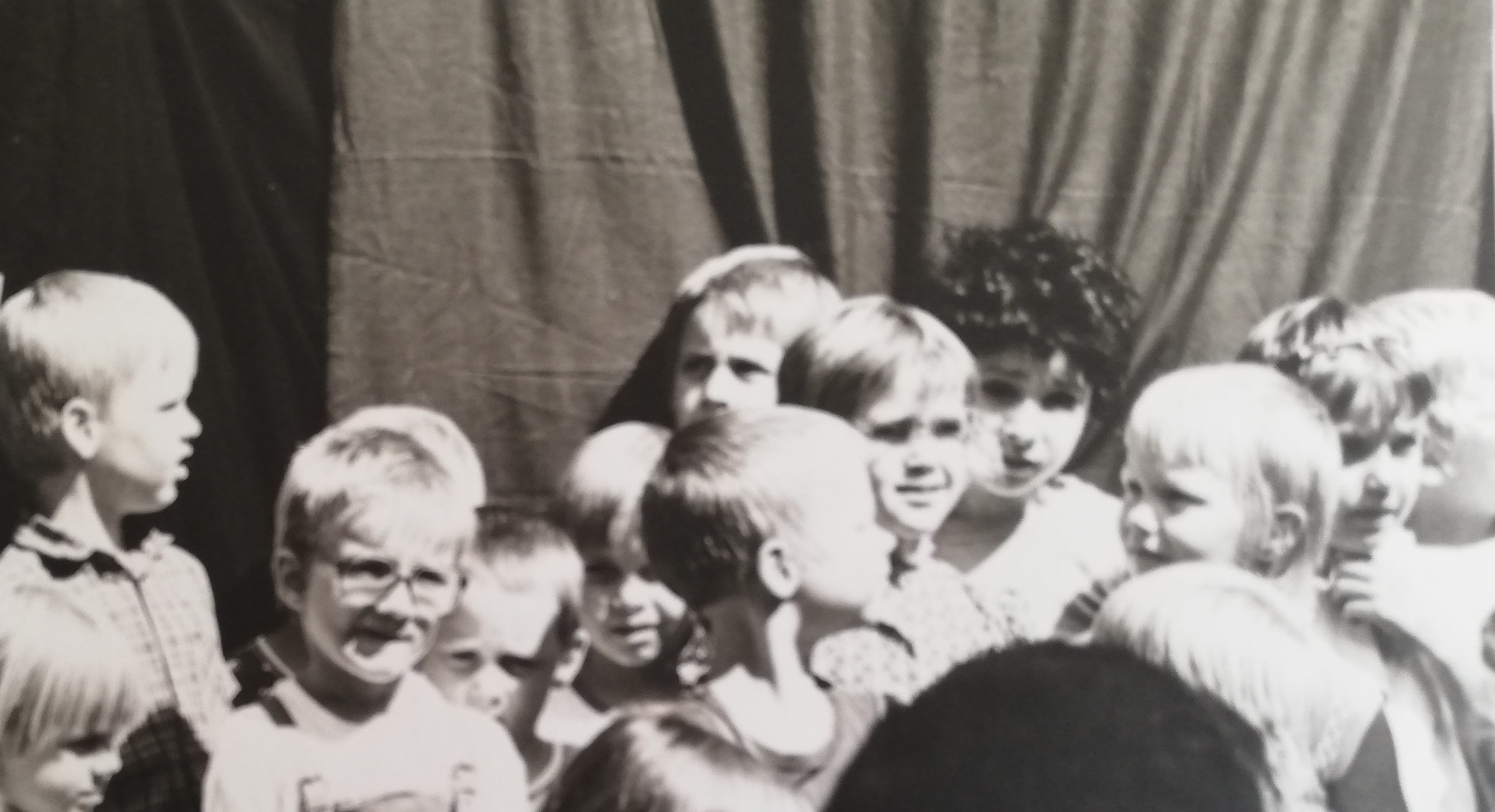
This arrangement evoked another one that was familiar to me, a mirror image in reverse. In his first grade class photo taken in East Berlin shortly before my parents left, my older brother Johannes, seven years my senior, is the only brown-haired child among the blond heads. In Germany we were the Jews; in Strasbourg we had become the Germans.
My class, like all the classes at the Aquiba school, was more or less equally composed of Achkenazim and Sephardim. Strasbourg, by virtue of its history and geography, was an exception in national Judaism, which had been predominantly Sephardic, especially in traditional circles, since the arrival of Jews from the Maghreb.
All the classes at the Aquiba school were divided into three classes: the boys’ class (G), to which I belonged, the girls’ class (F) and the so-called “mixed” class (M).
We almost never spoke to the M’s, they were the ones who organized parties, there were rumors that some of them didn’t even respect Shabbat and that one of them even raised a mygale at home, without a direct link between cause and effect being verified. The F class was an unknown continent, secret meetings would only begin to be organized later, after puberty.
There were rare cases of transfers, a boy from M could find himself parachuted into G and vice versa, but on the whole each class was united and regarded the other with a mixture of circumspection and curiosity.
A second division was superimposed on this first one, which concerned only the courses in Jewish subjects (the “kodesh”). He assigned the students to a section based on the level of religious practice of their parents: “traditional” for the less observant, “intensive” for the middle class (of which I was one) and “deepening” for the purists.
It could happen that an M would end up in the intensive section (mostly attended by G’s) and a few hopeless cases of G’s, judged irrecoverable by their parents or the teaching staff, could be relegated to the “traditional” section, which, in our eyes, represented the antechamber of the public school, which in Jewish was just called “the goy school”.
Of all the students in the photo, most have married and had children, some have divorced, some have even remarried. Some have completely cut off from religion, without anyone daring to take the step of mixed marriage, others live only by the Torah. There are those who never set foot in Strasbourg again and those who never left, either to avoid falling back into childhood or not to leave. One of them has become a leader of Torah-Box while I am in charge of Akadem, two Jewish media that are on opposite sides of the world. Last summer we met by chance in a street in Jerusalem, we knew we were rivals on paper but the human thickness won out and we felt ashamed of the caricature that each one projected on the other. We talked about each other’s life choices, dizzy with the mystery of diverging paths, and we agreed on the most unexpected path, that of the current Grand Rabbi of Strasbourg, but not shown in the photo: he was in M, the class of miscreants.
Two teachers flank us in the photo. On the left, Mr. Mimran, our math teacher, was Moroccan, and on the right, Mr. Jasner, cantor of the Great Synagogue and music teacher, was Alsatian. Both of them were among those who had already been teachers, in the same school, of the generation of my classmates’ parents. When they scolded, punished or favored a student, it had a ripple effect on those who had been their students 30 years earlier and had occasionally become colleagues whom they met in the teachers’ lounge.
Unlike the students, not all the teachers at Aquiba were Jewish. They were a solid minority, and I had the feeling that they liked it, that Jewish goofiness was becoming part of their workday, their norm. There was something reassuring about the supposedly real world having its reverse, and it reminded me of a drawing in a book called People that I often read with my parents, which fascinated me. It showed a couple of pygmies being mocked by native Europeans and, in mirror image, a couple of Westerners being mocked by native pygmies.
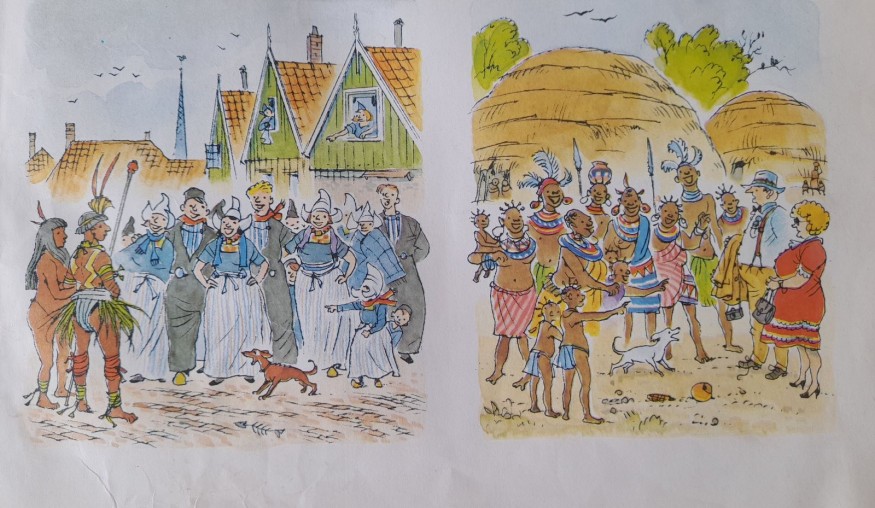
Our pygmy was called Mr. Larnicol, our history-geography teacher. He told us on the first day of class that he would teach us the opposite of what we would learn the next hour in “kodech” class: the earth was 4.5 billion years old, gods and religions were inventions of the human mind, and history was not the product of a design. Mr. Larnicol was pushing the mental gymnastics to the limit when he, the self-proclaimed atheist, called one of us to order by pointing out that wearing a yarmulke in class was mandatory in the school’s internal rules. Thanks to him, we discovered even before the bar mitzvah that a worldview can support two parallel registers of truth. Mr. Larnicol was also an exile, from the antipodes of France, and he never missed an opportunity to illustrate his geography lessons with cases from Brest. None of us knew how to get to the cathedral in Strasbourg, but we knew the demographics, the precipitation rate, the seismographic curves of Brest, Mr. Larnicol’s lost and pining land.
The Shoah was never mentioned during my entire schooling, it was considered as tacit knowledge. Of course, we knew, but without knowing anything. In truth, we were totally unaware of the history of which we were the survivors and the continuators. We were in the 90s, memory trips did not yet exist and, as nature abhors a vacuum, the only time I heard about it in class was in the most distressing way possible, from a Sephardic rabbi straight from Morocco who was supposed to give us lessons in dinim (Jewish “law”). In his mouth, the Shoah was summed up in miraculous stories of how the Einsatzgruppen had spared an entire shtetl, moved to tears by the moving recitation of the Kaddish of those they were about to massacre.
I don’t know what his intention was, or if he believed in this nonsense, or even if he knew what the Shoah was, but I hated him that day. I did not understand how Jews could produce such empty and obscene speeches about what they themselves had suffered. I was not surprised that goys denied the Shoah, it was the logical consequence of what had been committed, but it was revolting that the victims themselves distorted what had happened in their own way, by using bondieuseries. It was at that moment that an ambivalent feeling was born in me which has never left me since: that of a great attachment coupled with a great strangeness towards the Jews.
Zionism was never thought about, formulated or problematized either. For some of my Sephardic comrades, it amounted to a monolithic anti-Arabism. When we discussed the Arab-Israeli conflict, they repeated their parents’ mantra: “you Achkenazis don’t understand anything, we knew them, if you give them the finger they take your arm, they only understand the language of force. Arab and Muslim being one in their minds, I systematically pulled out my Joker card: my uncle Hassan, black and Muslim, whom I loved very much and who didn’t correspond at all to the description they made.
I had no particular sympathy for the Palestinians, knew nothing about the situation on the ground, and only saw my uncle once or twice a year, but I used this parry only to break the consensus around an empty and Pavlovian Zionism.
In general, I could not understand how they could hate Arabs so much and at the same time miss the Maghreb so much, put on a djellaba at the first opportunity, exult at Morocco’s victories in the soccer world cup, brandish the superiority of their traditional dishes, and show off the feeling of “home” that the use of Arabic formulas gave them.
It was the height of the Oslo Accords negotiations and the Rabin-Arafat-Clinton handshake. One morning, the school principal came to our class and told us to stand up and repeat Tehilim (Psalms, which are recited to prevent misfortune) after him. Yitzhak Rabin had been assassinated the day before by Yigal Amir and a sense of shame hung over the class. The negotiations with the PLO were abhorred by most of my classmates’ parents, but killing him was too much, because “a Jew does not kill another Jew.”
My parents’ Zionism was minimalist and essentially anti-anti-Zionism. We had never been to Israel and had no family ties there; the only distant cousins we had there had long since emigrated to Australia. When they had left the GDR, Israel had not even been an option for my parents: the communist lie had done away with any political project. For them, Israel was an accomplished but distant fact, almost an off-track item in Jewish history. Certainly, they told me about the episodes of the Entebbe hostage-taking, the destruction of the Osirak nuclear power station or the Cherbourg launches exfiltrated by Mossad under the nose of De Gaulle, and I remember how the story of these episodes made me proud to belong to a people capable of such aplomb. The fact remained that these feats were anecdotal, certainly glorious, but that authentic Jewishness had no state and had only two sources: the religion of the Torah and the culture of Mitteleuropa. Israel was an epiphenomenon that could be accommodated but could also be dispensed with.
So it was a big shock when my parents realized that for many of their friends, retirement meant aliyah. It had taken my parents 30 years to make a place for themselves in Strasbourg, and at the same time, those whom they saw as natives were preparing to leave. They too were living in suspension, between the forever closed door of the former country and the hoped-for home of which France had turned out to be only the antechamber. The Judeo-Moroccan idylls and the Judeo-Alsatian symbioses had also had their share of ransacked nuptials, vanished in the blink of an eye, and left silent scars.
Our foreignness has long prevented us from discerning theirs. Ours had the advantage of being flagrant, of being provided with a language and even of giving rise to a literature. Theirs was mute and doubled by the pain of not even knowing what they were missing. None of my classmates spoke a word of Judeo-Arabic or Judeo-Alsatian. They didn’t even know what amputation they were suffering from, what phantom pains were itching them, what exile they were in. They had forgotten even their nostalgia, their Heimweh, while we were entangled in ours.
A good third of the children in the 6th grade photo live in Israel today. I can only affirm an aliyah out of Zionist conviction for one of them. Since adolescence, the return of the Jewish people to its land represented in his eyes “the beginning of the seed of our redemption[6]”
I have often wondered what made others move there. When I ask them the question, they often answer me mechanically with the same formula: “there is no future for Jews in France”. Behind this sentence, which sounds like a self-fulfilling prophecy, is an admission: they too clearly did not feel at home in a country where, however, nothing and no one prevented them from being Jewish. Ironically, once they arrived in Israel, they gathered among French people, prayed among people from Nice, Strasbourg or Marseilles, watched the French TV every day and shared the pain of a country they had deliberately left. They reproach the Israelis for lacking the sense of conversation, the finesse and the French culture they claim to be steeped in. When they arrived on the other side, it was their turn to have their own Spiesser.
In the synagogue that my father attends, a good quarter of the congregation is now from Germany. Strasbourg has become an important stopping point for more and more members of the German Jewish community, which was artificially recreated by importing Jews from the former USSR in the 1990s, but which lacks any real breath. In the aisles of this synagogue, I sometimes let my ears wander to hear them speak German among themselves. What was incongruous, almost monstrous during my childhood has become commonplace. In the meantime, the country my parents left no longer exists, the border between France and Germany is invisible, the no-man’s land between Strasbourg and Kehl has been filled in, the Aquiba school has left the Quai Zorn and I myself have moved to Paris. I think to myself that my parents came too early, that the lock was not yet adapted to the key and that today’s newcomers have no idea how painful it was to pave a path for them.
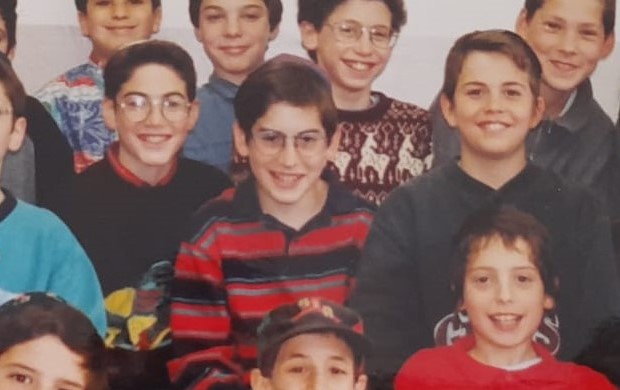
Often, I look at the class photo. Each time, I catch myself tracking down the tiny clues that foreshadowed the destinies: the Michael Jordan cap of one, the dissimulation of another, the absent air of this one, the coquetry of that one, a mischievous smile, a false air of self-confidence. For a long time this photo remained my social compass, the measuring instrument of my inner geometry, the one by which I evaluated the distance that separated me from each of my classmates. Each of us has gone our own way, the group has broken up and that’s good. I am no longer the center of the group, I am my own center. And now I can look at the picture differently: without Zorn.
Ruben Honigmann
Notes
| 1 | Bar Kochba (son of the star) was the messiah, Aquiba said. He is only an illusion and lies (Bar Koziba) said the other masters. Then, already, the military and political option was tense for the rabbis. |
| 2 | Talmud of Babylon, tractate Shabbat 119b |
| 3 | ”You shall not make for yourself an image …” (Exodus 19,) |
| 4 | In Hebrew, the term midot means both moral values and physical measurements. |
| 5 | Midrach Genesis Rabba 68:9: Why is God called Makom (the place)? Because he is the place of the world but the world is not his place. |
| 6 | Rechit tsmichat geulatenou: a consecrated expression to qualify the messianic dimension of the Jewish national regeneration. It appears in the prayer for the State of Israel, recited in some synagogues. |



